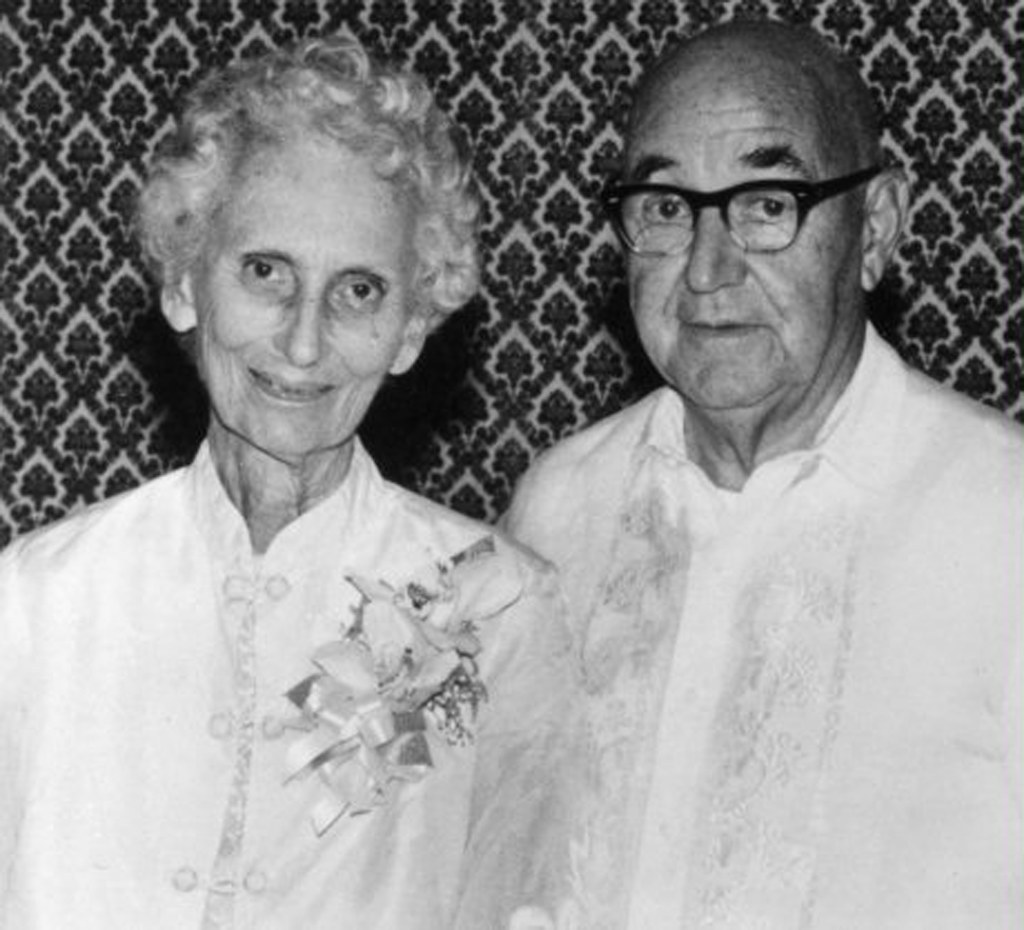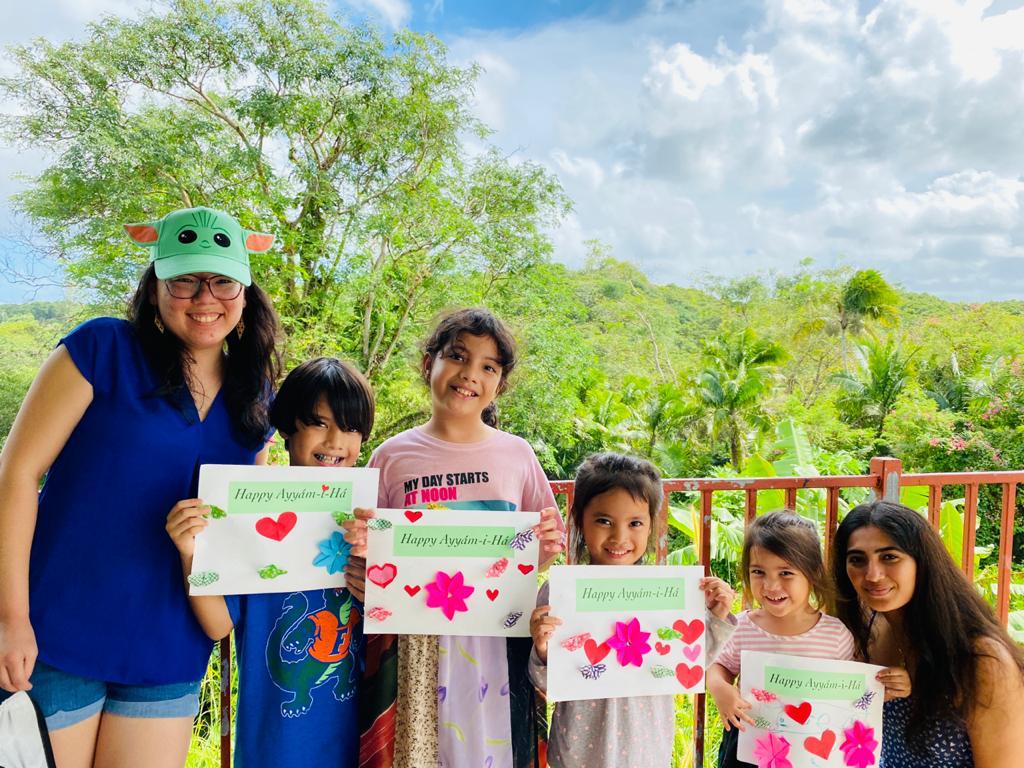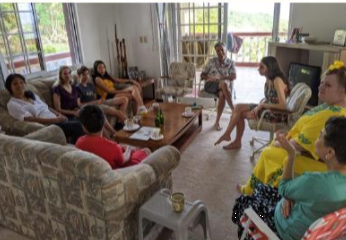
O Hagu ti komparayon Si Yu’os! Hami i omitde na setbente-Mu, ya Hagu i Todu-Gloriosu. Mani’isao ham, ya Hagu i itmas a’asi’i. Mankaotibu ham, mamoble yan mambåhu ya Hagu i fanlihengan-mami ya inakudin-mami. Kulan dikikiki manotdot ham, ya Hagu i Sainan thronu, gi i halom i mas takilo’ na langhet. Protehi ham, sigun i rikuetdon i grasia-Mu, ya munga mana’na’ i inadahi-Mu yan inakudi-Mu giya hami. O Asaina! Siempre malaktos i chinagi-Mu, ya siña i chinagi-Mu mandestrosa hotkon siha ni manmafa’tinas ni lulok. Protehi ya na’metgot ham; na’chalek yan na’magof i korason-mami. Na’grasiosu Hao umakudi ham para bai in setbe, taiguihi ‘Abdu’l-Bahá, i sinantusan na saga-Mu.
.
The First Bahá’ís of the Mariana Islands
Robert Powers, Jr., a member of the US military, was stationed on Guam in 1954 and became the first Bahá’í in the Mariana Islands.
On May 2, 1954, Cynthia R. Olson arrived on Guam in response to the call from Shoghi Effendi; becoming the first permanent
Bahá’í Settler in the Mariana Islands. Thus began the loving relationship still found between the Bahá’í Community and the
peoples of the Mariana Islands. The Faith was not entirely unknown to the Mariana Islands as the Faith had been introduced to
the Manibusan family in Sinajana in 1936 by Mrs. Mary Sweyze who had joined her husband, scientist Dr. Otto Herman Sweyze, doing
a study of the insects of Guam. Additionally, during the closing periods of World War II, around 1945, Mr. Paul Pettit, a member
of a “special mission” of the United States Armed Forces, held a conference on Saipan with two other young servicemen, Joseph Peter
and Joseph Tierro, both based on Saipan.
Within the year DeWitt and Louanna Haywood and their children Carol Joy and Anne Marie arrived on Guam to assist in establishing the Bahá’í Community.
This community grew again when Mr. Charles Mackey, a US Civil Service worker, accepted the Faith and became Bahá’í. The small Bahá’í Community
was next jointed by Cynthia’s husband, Edgar A. Olson, who arrived on 6 April 1955 after completing the closing of their business in Delaware.
This small group of believers formally organized as a Bahá’í Group and began reaching out to the local community. In November 1955 another
Civil Service employee, Ellis S. Adkins, accepted Bahá’u’lláh and joined the Bahá’í Faith. Two additional young men accepted the Faith and
became Bahá’ís within the next several months. Antonio Alfonso, the first Filipino national to embrace the Faith, became a Bahá’í on 19 March
1956, and Joe Erie Ilengelkei of Palau, Western Caroline Island became the first Micronesian to accept Bahá’u’lláh when he became a member
of the Bahá’í Faith on 7 April 1956. With nine Bahá’ís residing on Guam, the believers formed the first Spiritual Assembly of the Bahá’ís of Guam.

Junior Youth GROUPSAssisting young people in developing their inherent potentialities, strengthening their character, and enhancing their spiritual understanding while contributing to the transformation of their neighborhood and society.

childern classES Helping children apply spiritual principles such as love, unity, and justice to their own lives and their relationship with family, friends, and community.

devotionAL GATHERINGS Unting withothers in prayer, awakening spiritual susceptibilities, and shaping a pattern of life distinguished for its heavenly attributes and selfless sevice to mankind.

STUDY CIRCLESCreating a space where youth and adults can come together to explore the practical application of the Bahai teaching to their individual and collective life, enhancing the skills and qualities necessary for a life of service.